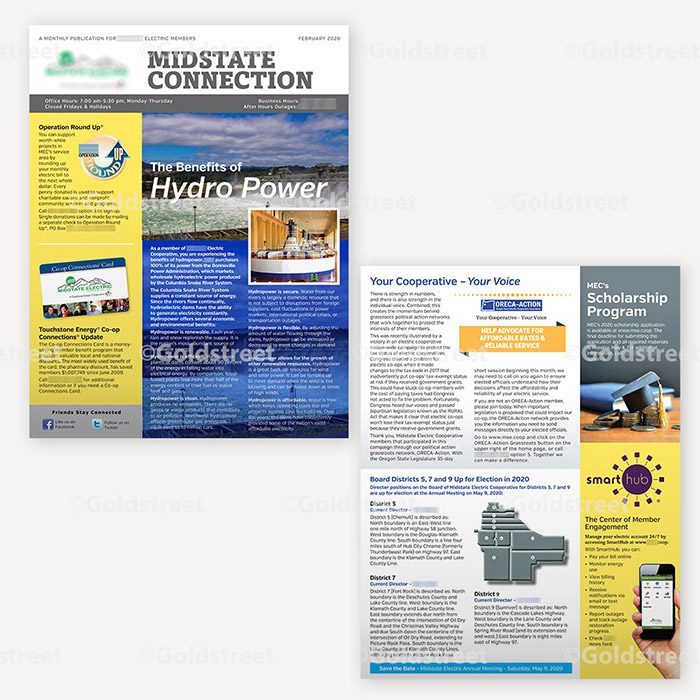“Newsletters are a quick way to touch base with your customers and provide them with tidbits of information that should make them want to go to your website, or blog, or meetings to learn more. It’s your way to tell them about things they should care about in their utility that they may not know about otherwise. It’s also a way for you to put faces to your organization so they know who to reach out to if they have questions or concerns.” – Kristin Masteller, Director of Business Services, Mason County PUD
Newsletters are one of the best ways to communicate important information with a wide audience, but first you have to get people reading what you send!
Here are six great tips for making sure your newsletter is one that customers will want to engage with:
1. Spend Plenty of Time on Your Subject or Headline.
Although it may seem like a newsletter headline or email subject doesn’t matter much, it’s usually the first thing your reader sees. It gives them an immediate impression and helps determine whether they want to find out more. Go with a subject or headline that’s short, direct, and positive. The headline of a printed newsletter should also be eye catching and prominently placed to ensure that any reader will see it. To see how yours stacks up, try this free headline analyzer from the Advanced Marketing Institute.
2. Simplify, Simplify, Simplify.
It’s crucial that you don’t overwhelm your readers with too much information. Be concise and focus on one clear message. Before you mail out your newsletter or hit send on the email, make sure you’ve cut out everything that’s not necessary. That might even mean stepping away from your content for awhile and coming back for one last pass at trimming it down.
3. Create a Hierarchy of Information.
In addition to keeping your newsletter simple, you also want it to be well organized. Since most people only spend a limited time reading a newsletter, it’s crucial that you put your most important information first. If you have a lot of information to communicate and you’re sending an email, consider linking out to your website.
4. Provide Information that Educates Your Customers.
Your newsletter should offer reliable and informative content. Send your customers information that is useful to them, and they are more likely to engage with it. Regularly sending educational content can help build your customers’ trust in you as they come to see you as an expert in your field.
5. Keep Your Layout Clean.
No matter how helpful your information is, it also needs to be visually appealing and easy for your readers to digest. In our age of social media, most people are used to reading in short bursts, so your newsletter should cater to a short attention span. Use headers to break up sections and present information in bulleted lists that are easy to read. Keep your design simple and use plenty of white space.
6. Create a Customer Feedback Loop.
Creating an engaging and educational newsletter is important. Getting customer feedback on your messaging is just as important. Customer feedback loops are extremely efficient ways to improve your services and to meet customer’s needs. Creating this customer interaction, you can gather information that is important to your audience, learn from it and tweak your messaging to make it more meaningful. Make sure you include avenues for feedback in your newsletter, invite people to participate in the conversation through surveys. Offer incentives for feedback. Some examples are: a free inspection or a giveaway of a promotional item. Make sure to include an email address, survey link and contact information.

